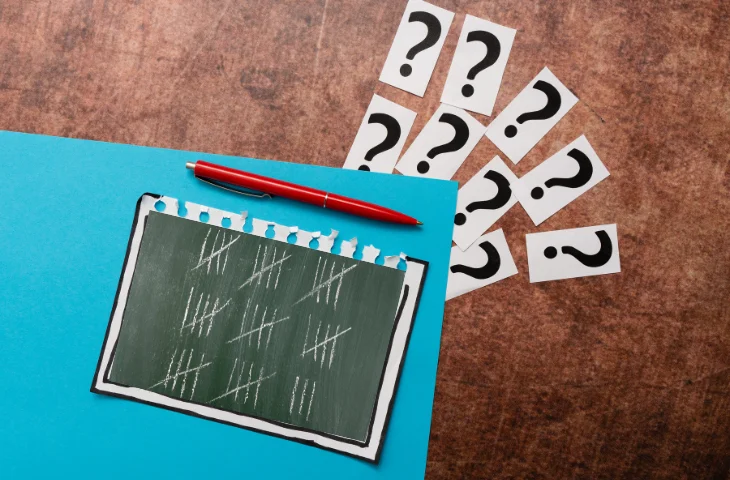Count Figure Reasoning is a common and scoring topic in competitive exams like SSC, Banking, and RRB. It involves analyzing visual figures and counting specific elements or shapes based on given conditions. In this blog, we will cover what count figure reasoning is, why it is important in exams, short notes and formulas, question types, useful tricks, and tips for bank exams.
What Is Count Figure in Reasoning?
Count Figure reasoning requires you to carefully observe diagrams or figures and count the number of certain shapes, lines, or patterns within them. These questions test your visual accuracy and logical thinking.
This topic frequently appears because it evaluates a candidate’s ability to decode visual information quickly and correctly.
Key skills required include:
- Keen observation
- Attention to detail
- Logical visualization
- Pattern recognition
Why Is Count Figure Important in Competitive Exams?
Count Figure questions are usually straightforward yet time-saving scoring questions if you know the tricks. They appear across various exams with a predictable difficulty level and question count.
| Exam | No. of Questions | Difficulty |
| SSC CGL / CHSL | 1–2 | Easy |
| IBPS PO / SBI PO | 1–2 | Moderate |
| RRB NTPC / Group D | 1 | Easy |
| State PSC / Police | 1–2 | Moderate |
These questions can quickly boost your score and reduce stress during the exam if practiced well.
Count Figure Reasoning Short Notes
Understanding key terms and notation simplifies count figure reasoning.
| Term | Explanation |
| Overlapping Figures | Figures that share common regions |
| Intersection | Area common to two or more figures |
| Union | All areas covered by the given figures combined |
| Nested Figures | Figures placed inside each other |
| Shaded Region | Highlighted or marked part of the figure |
| Counting Errors | Missing or double counting overlapping parts |
Logical patterns often involve counting circles, triangles, squares, or lines in combined shapes or Venn diagram-type problems.
Count Figure Reasoning Concepts
Below are core concepts to remember for quick revision:
| Concept | Explanation |
| Overlapping Regions | Count common and exclusive parts separately |
| Use Venn Diagram Logic | Visualize intersections and unions |
| Avoid Double Counting | Carefully exclude repeated counts |
| Count One Shape at a Time | Break complex figures into simple shapes |
| Practice Visualization | Mentally imagine cutting shapes apart |
| Check All Conditions | Always verify question-specific instructions |
What Are the Types of Count Figure Questions in Reasoning?
Count Figure questions can be broadly classified as:
- Direct: Count the number of specific shapes in a figure.
- Puzzle-based: Involve multi-step counting using clues.
- Coded (symbol-based): Shapes represent codes or symbols to decode first.
- Mixed-concept reasoning: Combine count figure logic with other reasoning topics like blood relations or directions.
Count Figure Formulas for Reasoning
While there are no numerical formulas like math, the following logical templates work as “formulas”:
- Total Count = Sum of individual shapes – Intersection count

- Visual decomposition: Break complex figures into simpler identifiable shapes
- Use elimination: Remove counted regions from total carefully
Count Figure Tricks for SSC CGL and Other Exams
To solve count figure questions faster and more accurately:
- Use family tree or Venn diagram charts to visualize overlaps.
- Start counting from simpler or non-overlapping parts.
- Reverse map complex shapes back to simple ones.
- Mark counted parts to avoid double counting.
- Use pencil to shade or circle counted regions if on paper.
- Look for symmetry to reduce counting time.
- Carefully read instructions—some count only shaded or unshaded parts.
Common Mistakes to Avoid while Solving Count Figure
While solving Count Figure reasoning questions candidates must keep in mind:
- Double counting overlapping regions: Always subtract intersections.
- Ignoring instructions: Some questions count only shaded or specific parts.
- Rushing through figures: Leads to missed shapes or miscounts.
- Not breaking down complex figures: Decompose into smaller units first.
- Not practicing enough: Familiarity with common figure types improves accuracy.
FAQs
A: Use Venn diagram logic, start with non-overlapping parts, and avoid double counting by marking counted areas.
A: Yes, but usually 1–2 questions with moderate difficulty appear in the reasoning section.
A: It’s not advisable as these questions are easy and scoring, especially when you are short on time.
A: These involve shapes representing codes or numbers, requiring decoding before counting specific elements.
- Bihar State Cooperative Bank Mains Admit Card 2025 Out, Direct Link
- SSC CGL Tier 2 Arithmetic Questions, Download PDF
- Top 500 SSC CGL Tier 2 Practice Questions PDF, Download Now
- IBPS RRB XIII Reserve List 2025 Out, Check PO, SO and Clerk 3rd List
- 100 Most Difficult Logical Reasoning Questions for SSC CGL Tier 2 PDF
- Most Repeated SSC CGL Tier 2 General Awareness Questions 2025

Hi, I’m Aditi. I work as a Content Writer at Oliveboard, where I have been simplifying exam-related content for the past 4 years. I create clear and easy-to-understand guides for JAIIB, CAIIB, and UGC exams. My work includes breaking down notifications, admit cards, and exam updates, as well as preparing study plans and subject-wise strategies.
My goal is to support working professionals in managing their exam preparation alongside a full-time job and to help them achieve career growth.
